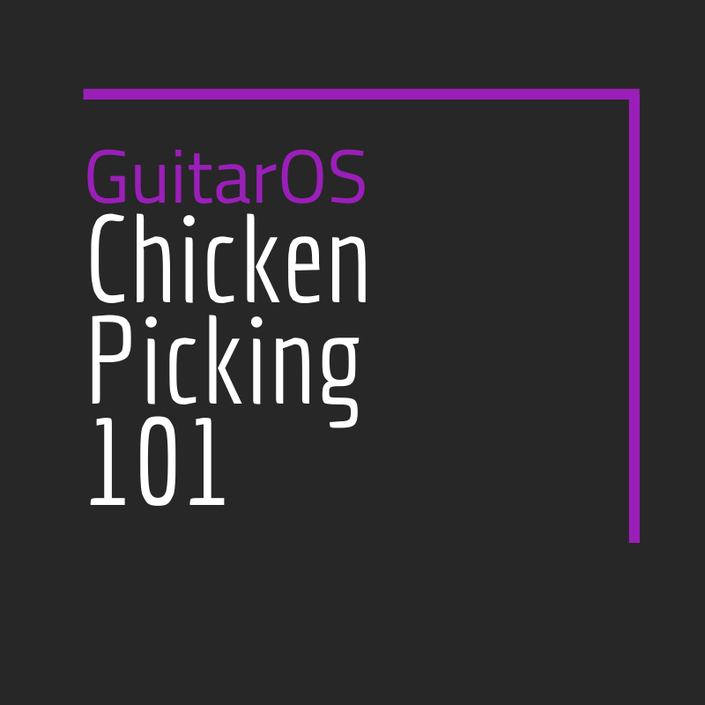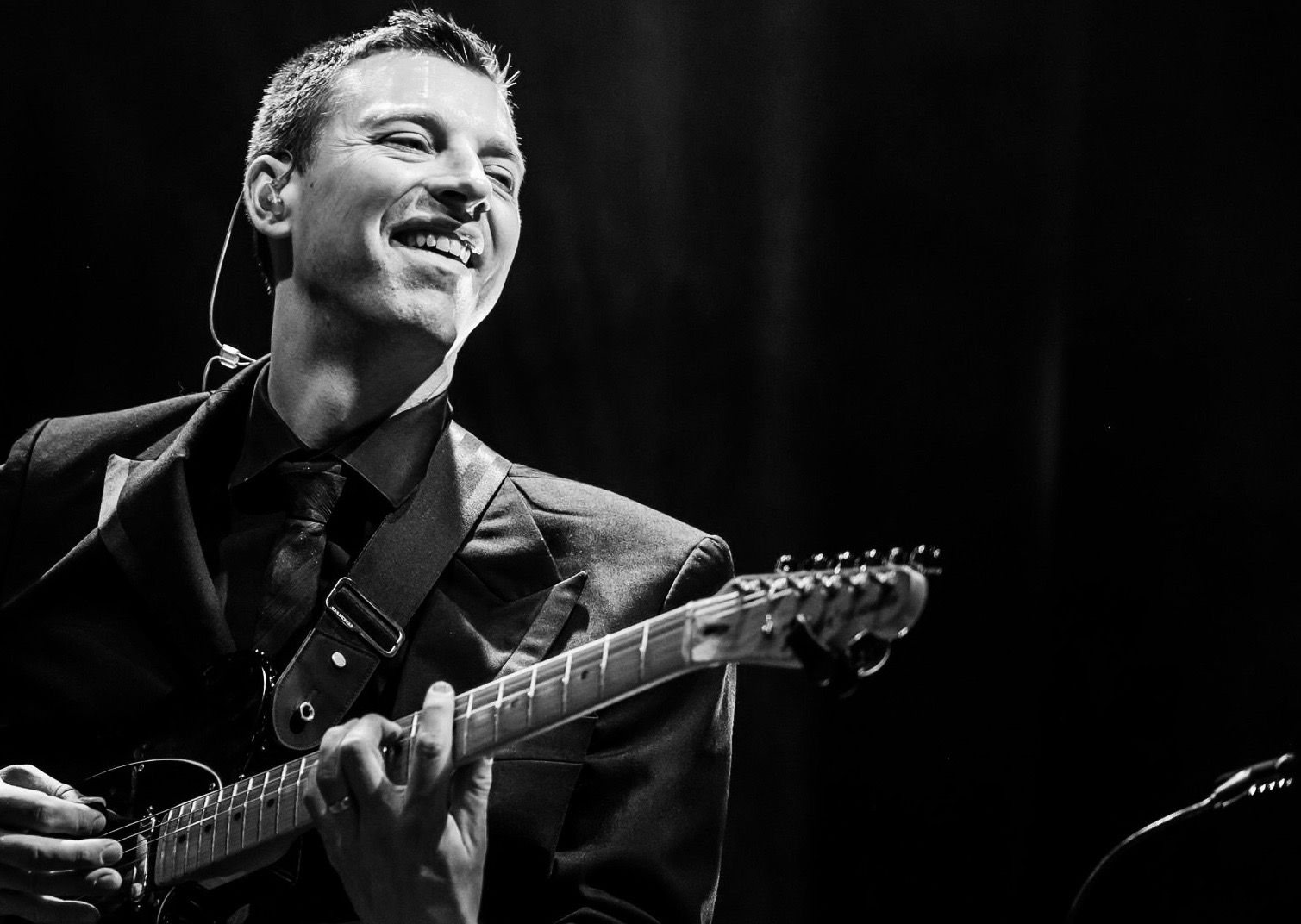
Chicken Picking 101
The step-by-step guide to percussive hybrid picking technique.
“Chicken Picking” is a phrase that gets thrown around with abandon, with no real consensus as to what the hell it really is.

Even Johnny Hiland—who is unquestionably a master of the technique—can’t seem to define it. Here’s him rambling for several minutes about hats, boots, confidence, gear… while only briefly hinting at things involving technique, sound, or style.
[I recommend skipping this video, though the rest of his course is solid.]
Right off the bat, here’s a few things that aren’t chicken picking, at least not in and of themselves:
- faux pedal steel bends
- double & triple stops
- B benders
- behind-the-nut bends
- open-string pull-offs
- banjo rolls
- “melodic” style runs
- Telecasters
- compression pedals
- slapback delays
So what is chicken picking?
Chicken Picking is a percussive guitar technique.
It’s commonly used in (but not limited to) honky tonk & country music.
It is almost always played with hybrid picking.
The percussive nature can come from:
- snapping the strings against the frets
- staccato achieved by near-instant unfretting of a note
- staccato achieved with palm muting
- staccato achieved by muting with the pick or picking finger
- picking a muted string
In this free course, I'll walk you through each of these in turn (and give you exercises to practice them with).
...oh yeah:
Who the hell am I?
Why should you believe anything I have to say?
This is me.

My name is Josh. I’ve been a self-taught guitarist for twenty-plus years. It’s been my only job for over a decade.
For most of the 23 years I played guitar, I sucked.
Like you, I’ve seen more than my fair share of “I-was-once-just-like-you-but-then-I-discovered-this-long-lost-secret-and-now-my-life-is-amazing!” sales pitches.
Don’t worry: I’m not trying to go all sleazy internet scam artist on you and tell you that I learned some magical “secrets” that made me amazing at guitar.
The truth is more subtle and nuanced than that:
In any field of expertise, there are some things that are best understood & explained by someone who was emphatically not a natural.
After all, how can someone who could always “just play” explain to you what’s really going on under the hood?
Academics call it “the curse of knowledge”—the inability of experts to remember what it was like when they were still newbies.

We talked before about survivorship bias, which lets us see only those players who—through some combination of good luck, hard work, and excellent taste—have “survived” long enough for us to be aware of them.
I’m a guy who has experienced both good luck & hard work.
I lucked my way into a scene of world-class musical badasses—people who’ve played & toured with iconic artists like Stevie Wonder, Sting, Jay Z, Elvis Costello, Pat Metheny, John Mayer, Night Ranger, and a crap-ton of others.
Then I worked my ass off trying to deserve that amazing good fortune.
Along the way I learned how to practice. I got my time & feel together. I learned to think & speak using the language of working professional musicians.
And I figured out how to get my hands to reliably do what I want.
For each of those huge wins, I’ve created a course to share what I’ve learned, so people like you can go straight to the good stuff, without all the pointless flailing about, false starts, and dead-ends.
In fact, let’s hear from some of those people just like you.

"I hate you. But in a it’s-really-nice-to-feel-like-I’m-building-a-good-foundation-but-damn-is-this-hard-work sort of way."
-Ben K, Chicago

"Awesome. It has genuinely helped my playing."
-Todd L, Los Angeles
These are people just like you. Once you've taken the course, I hope you'll write me a note like this so I can include it here.
Want to know what my fellow teachers have to say about it?

"This is genius. Thank you."
—Lara Mirinjian, author of The Sight Reading Solution & consistently voted one of the top music teachers in Los Angeles

"Focused, thorough instruction that supplies the missing ingredients we guitarists need in order to excel."
-Larry Newcomb, renowned guitar instructor & PhD in music

"Josh cuts through the all noise surrounding technique and gives you clear, step-by-step instructions on how to develop picking chops that work for you. Recommended."
-Eric Justen, owner & lead instructor at Guitar Smart Studios, guitarist for Tripping Billies, badass sideman
So how 'bout it?
Are you ready to learn some chicken picking?
Frequently Asked Questions
Your Instructor

A lucky break forced me to make the jump from "fairly decent bar band guitarist" to "professional musician" long before I was ready or qualified.
Suddenly I was surrounded by elite professional musicians, people who'd toured with huge acts and had long lists of recording credits.
It was a baptism by fire as I scrambled to quickly develop the skills & knowledge necessary to operate in this new space.
Along the way, I discovered something surprising—internet gurus and big-name music schools alike are focused on all the wrong shit.
Badass musicians the world over share a common language & a set of priorities I've never seen taught anywhere else.
It took me awhile to piece it all together & put it all in the right order.
But now that there's a clearly defined path, all that's left is for you to decide you're done with wandering blindly in the darkness, done depending on luck, ready to show up and put one foot in front of the other on the road to badassery.
I hope you'll join us.